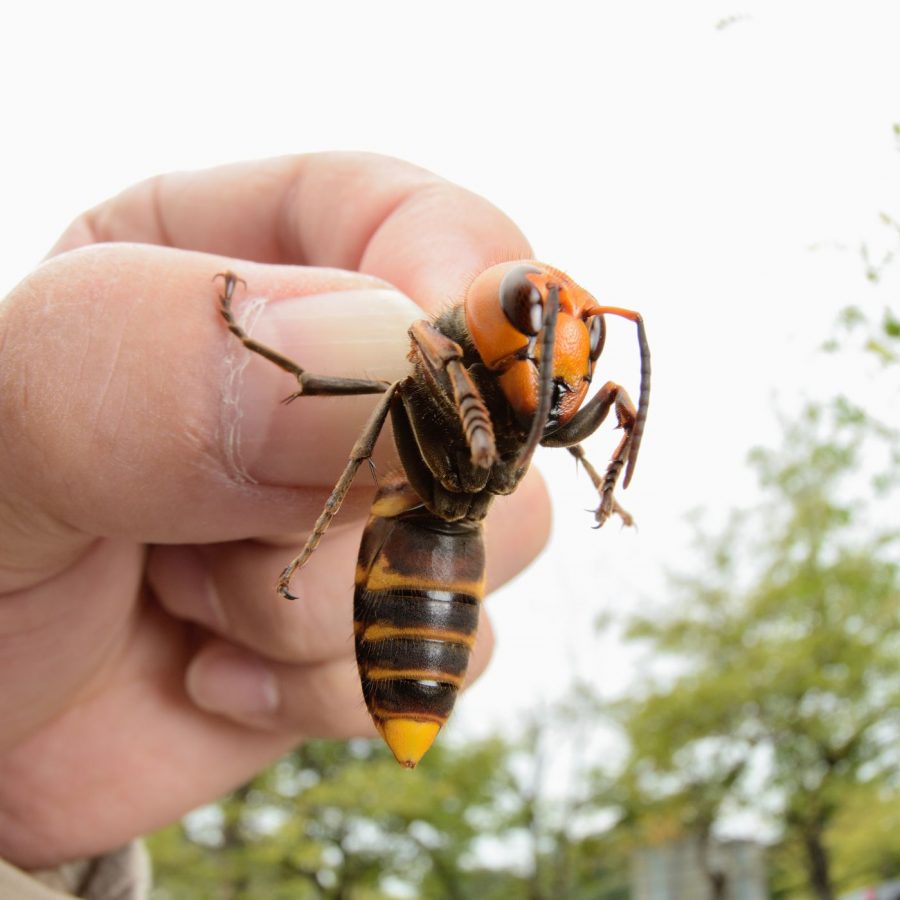More and More Murder Hornets
The Asian giant hornet, Vespa mandarinia
Another nest of the Asian Giant Hornets (also known as Murder Hornets) have been destroyed in Whatcom County in Seattle, Washington in September. According to the Washington State Department of Agriculture posts on Facebook and Twitter, the recent nest was the third nest that has been eradicated this year out of the four overall. The nest eradicated had about 10 combs inside the tree, making it the largest nest that has been discovered. This nest had over 1500 murder hornets, which is the biggest nest to ever be found.
Asian Giant Hornets, or Vespa Mandarinia, is the world’s largest hornet species with a length of usually 2 or more inches. They have large orange and yellow heads, and are famous for their painful stings and violent behavior. The Washington State Department of Agriculture stated that “While they do not generally attack people or pets, they can attack when threatened”, and “Their stinger is longer than that of a honey bee and their venom is more toxic. They can also sting repeatedly”. In fact, the team of eradicators got attacked by the swarms of Asian Giant Hornets when trying to eradicate their nest, but was fortunately protected by the hornet suits. According to the New York Times, these murder hornets’ biggest issue is that they are a threat to honeybees due to their behavior of destroying honeybee nests. Their ability to entirely wipe out honeybee colonies is concerning since honeybees serve an important role in our environment as pollinators for crops. If these murder hornets keep on wiping out honeybee colonies, our ecosystem will negatively impacted due to inability for flowers to pollinate. Especially for Wharton County, valuable crops such as blueberries are posed to these threats. According to entomologists, the Asian Giant Hornets also prey on wasps, which are also valuable local pollinators. These threats have forced the Washington State Department of Agriculture to take urgent action to take care of the nest.
The nest was first tracked down through approaches such as traps and services within the federal U.S. Department of Agriculture. These services helped track the murder hornets using radio tags that has previously been used to track the movements of lantern flies. The eradicators were able to find the nest through this service, as one hornet with the radio flag led the team to the nest. The nest was successfully eradicated with foam that was plugged in through the tree, and as it was wrapped with plastic, they vacuumed out all the hornets. This technique was previously used to eradicate other hornets’ nests as well, according to Amber Betts, the spokesperson for the Washington State Department of Agriculture.
The Washington State Department of Agriculture, therefore, encourages its residents to contact them when spotting an Asian Giant Hornet. The arrival of these murder hornets are unknown, but scientists predict that they were brought to the United States through illegal transports from foreign counties. Though the nest was successfully eradicated, they are not completely “eradicated” until “two consecutive years of negative results”. The department continually encourages Washington residents to report when spotting any of these murder hornets.






